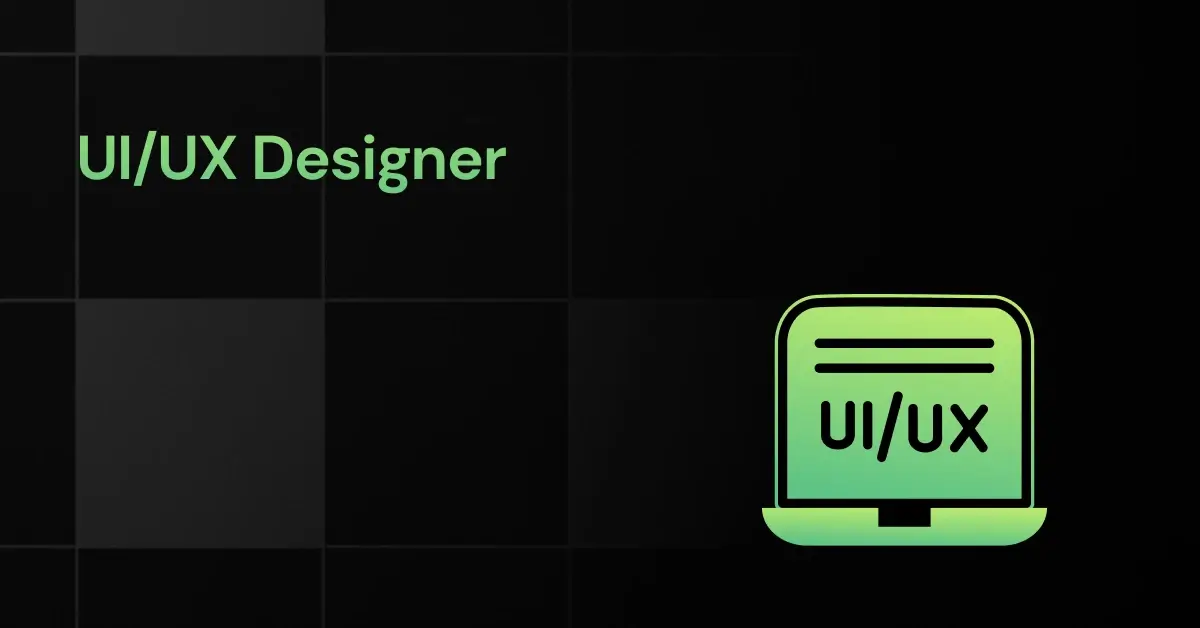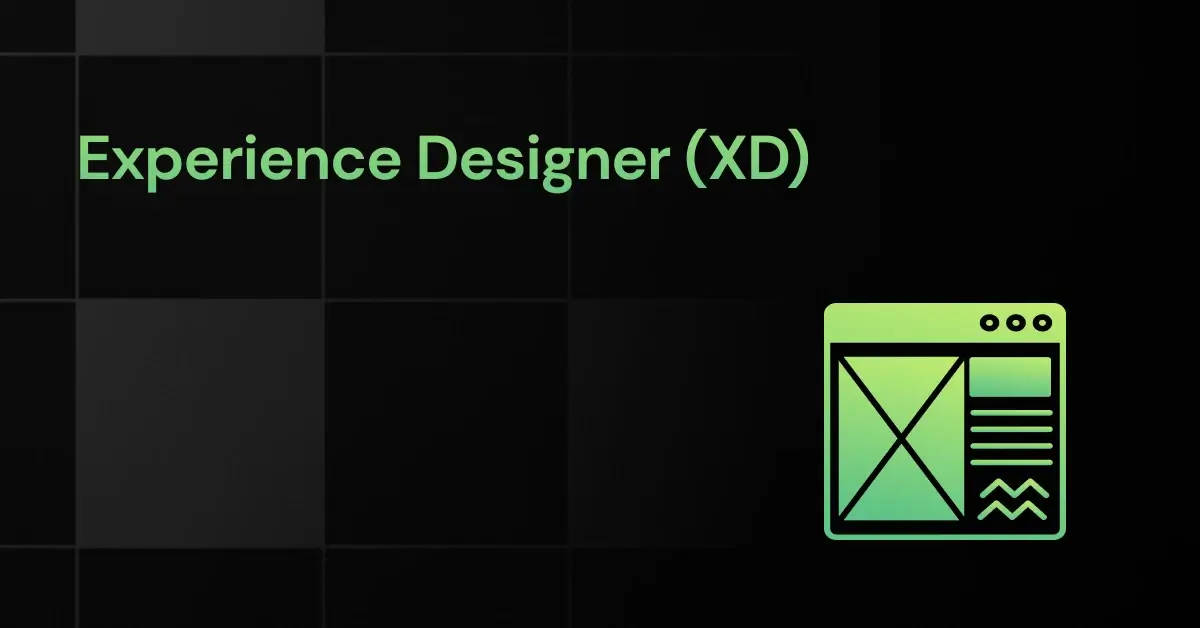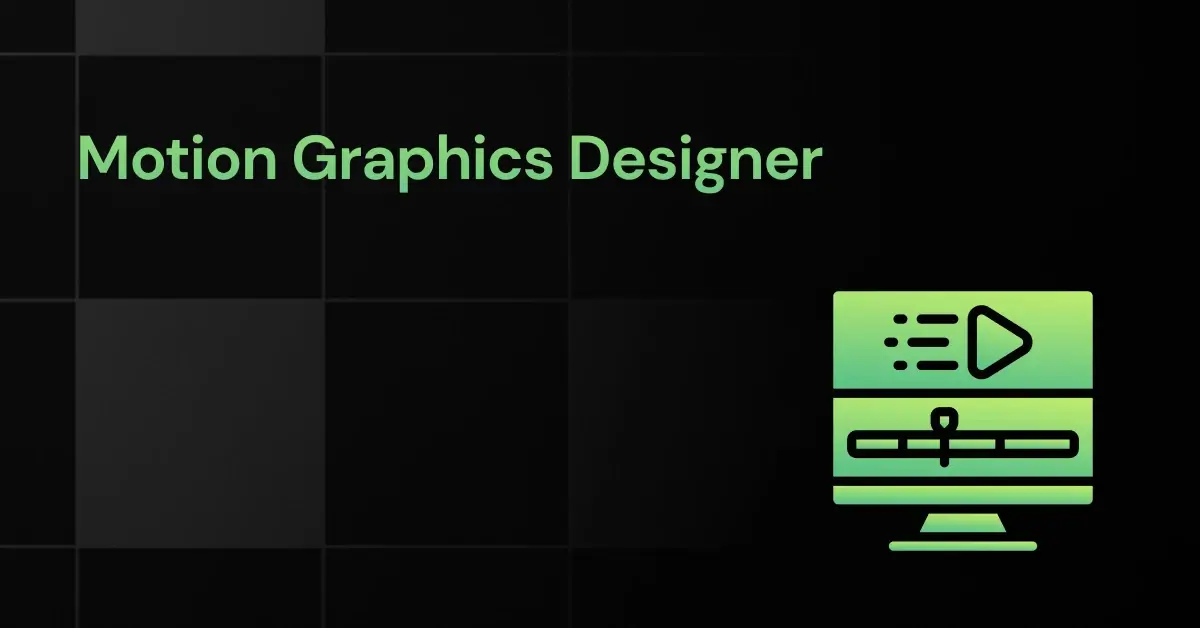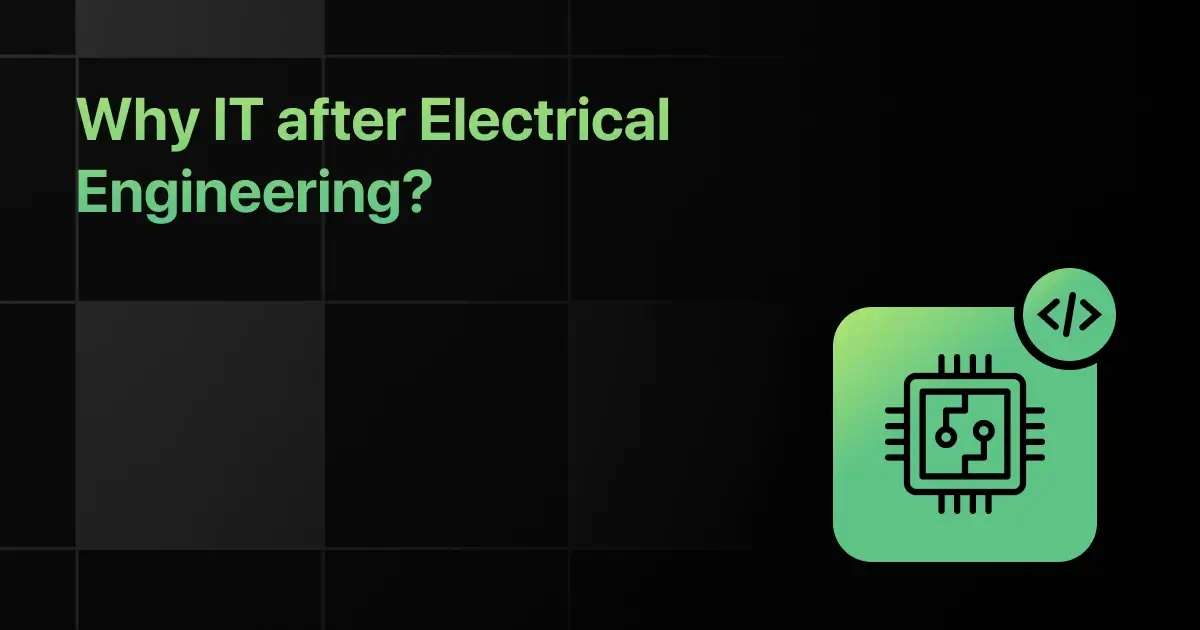Alternative Career Options for Graphic Designers
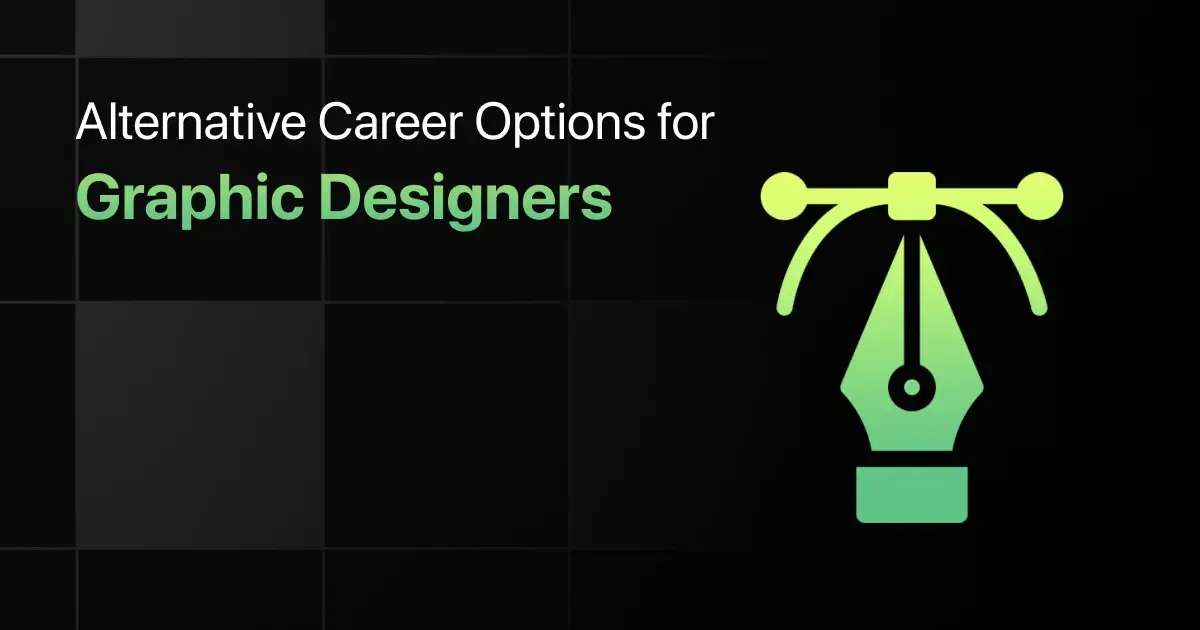
Why would a Graphic Designer consider a career change? Despite the creativity and artistic freedom this profession offers, many designers face challenges such as limited growth opportunities, the highly competitive nature of the industry, and the struggle for work-life balance due to project deadlines.
These factors often lead graphic designers to seek alternate career options where they can apply their creative skills in a less demanding or different context.
In this article, we explore alternate career options for Graphic Designers that offer new avenues to channel their creativity and expertise.
Alternative Career Options for Graphic Designers – Overview
Here’s an overview of alternative career options for Graphic Designers with insights into transition time, starting salaries, and potential for remote work:
| S.No. | Career Options | Transition Time | Avg Starting Salary Per Annum (INR) | Potential for Remote Work |
|---|---|---|---|---|
| 1 | UI/UX Designer (Product Designer) | 6-12 months | 4-8 Lakhs | High |
| 2 | Experience Designer (XD) | 6-12 months | 4.5-9 Lakhs | High |
| 3 | Motion Graphics Designer | 6-12 months | 3.5-7 Lakhs | Moderate |
| 4 | Art Director | 2-3 years | 6-12 Lakhs | Low |
| 5 | Brand Identity Designer | 6-12 months | 4-8 Lakhs | Moderate |
| 6 | Creative Director | 3-5 years | 8-15 Lakhs | Low |
| 7 | Multimedia Artist/Animator | 6-12 months | 3-6 Lakhs | Moderate |
| 8 | Web Designer | 6-12 months | 3.5-7 Lakhs | High |
| 9 | Interaction Designer | 1-2 years | 4-8 Lakhs | High |
| 10 | Visual Designer | 6-12 months | 4-7 Lakhs | High |
Career Change Options for Graphic Designers – Let’s Find the Alternatives
Below is the list of career change options or alternative employment for Graphic Designers:
1. UI/UX Designer (Product Designer)
UI/UX Designers are pivotal in crafting engaging digital experiences, focusing on user interface (UI) and user experience (UX). Their role is crucial in ensuring that digital products are not only aesthetically pleasing but also functional and user-friendly.
Graphic Designers often find a natural progression into UI/UX Design due to their strong foundation in visual design principles, creativity, and understanding of user-centric design approaches.
Job Market and Demand in India:
- The UI/UX design market in India was estimated at over 450 million USD in 2021 and is expected to grow to 800 million USD by 2028.
- There are approximately 16,475 job listings for UI/UX designers on Naukri.com, indicating a high demand in the Indian job market.
- Major cities like Mumbai, Bangalore, and Pune offer higher average salaries due to higher living standards and cost of living.
Skills and Knowledge Prerequisites:
- Proficiency in design tools like Sketch, Adobe XD, and Figma.
- Understanding of user-centered design principles and methodologies.
- Knowledge of wireframing, prototyping, and user testing.
- Basic understanding of HTML and CSS for better collaboration with developers.
- Awareness of current design trends and technologies.
Transferable Skills:
- Strong visual design skills from a graphic design background.
- Effective communication and collaboration abilities.
- Problem-solving mindset and creative thinking.
- Attention to detail and user empathy.
- Project management and organizational skills.
Starting Salary:
- The average starting salary for a UI/UX Designer (Product Designer) in India is approximately between INR 4,00,000 and INR 8,00,000 per annum.
Duration for Transition:
- Transitioning into a UI/UX Designer role can vary from 6-12 months, based on individual skill development and experience in related fields.
Risk Assessment:
- The primary risks involve adapting to rapidly evolving design trends and technologies in the digital space.
Work Flexibility:
- UI/UX Design roles often offer flexible working options, including remote work, part-time, full-time, and freelancing opportunities.
Work-Life Balance:
- Generally, UI/UX Designers experience a balanced work-life, with flexibility depending on project requirements and deadlines.
Career Progression:
- Opportunities to advance to senior designer roles, UX manager, or even UX director.
- Potential to specialize in areas like interaction design, user research, or visual design.
Job Stability and Industry Outlook in India:
- The growing digitization and focus on user experience in India contribute to a stable and promising career outlook for UI/UX Designers.
- With the increasing importance of digital presence, companies are investing more in UI/UX, ensuring job security and growth opportunities in this field.
2. Experience Designer (XD)
Experience Designers, also known as XD Designers, are responsible for enhancing the overall user experience across various platforms and products.
They delve into the broader aspects of customer interaction and engagement, making this role a natural fit for Graphic Designers who excel in creating immersive and engaging visual designs.
Job Market and Demand in India:
- The demand for skilled XD Designers in India is growing, as companies increasingly focus on improving user experience across digital platforms.
- Cities like Bengaluru, Delhi-NCR, Mumbai, Hyderabad, and Pune are hotspots for XD Designers, offering higher salaries due to the concentration of tech companies and demand for skilled professionals.
- The field is evolving rapidly, with a growing emphasis on creating seamless and user-friendly digital experiences.
Skills and Knowledge Prerequisites:
- Proficiency in design and prototyping tools such as Adobe XD, Sketch, and Figma.
- Strong understanding of user-centered design principles and methodologies.
- Ability to conduct comprehensive user research and usability testing.
- Knowledge of interaction design and information architecture.
- Familiarity with front-end development technologies (HTML, CSS, JavaScript) is beneficial.
Transferable Skills:
- Creative problem-solving and critical thinking skills.
- Effective communication and collaboration with cross-functional teams.
- Strong visual design skills, including layout, typography, and color theory.
- Empathy towards users and understanding of user psychology.
- Project management skills to handle multiple projects and deadlines.
Starting Salary:
- The average starting salary for an Experience Designer (XD) in India is approximately between INR 4,50,000 and INR 9,00,000 per annum.
Duration for Transition:
- The time required to transition into an XD role varies from 6-12 months, based on individual skill development and experience in related fields.
Risk Assessment:
- The primary risks involve staying updated with the latest design trends and technologies and adapting to the rapidly changing digital landscape.
Work Flexibility:
- XD roles often offer flexible working options, including remote work, part-time, full-time, and freelancing opportunities.
Work-Life Balance:
- Experience Designers generally maintain a balanced work-life, with flexibility depending on project demands and deadlines.
Career Progression:
- Opportunities for advancement to senior designer roles, UX/UI manager, or creative director.
- Potential to specialize in areas like interaction design, user research, or service design.
Job Stability and Industry Outlook in India:
- The increasing focus on user experience in digital products ensures a stable and promising career outlook for Experience Designers.
- The rapid advancement of technology and the growing importance of digital presence in India contribute to the high demand and job security in this field.
3. Motion Graphics Designer
Motion Graphics Designers are creative professionals who craft visually appealing and dynamic graphic content for various media channels.
This role is highly suitable for Graphic Designers, as it leverages their strong visual design skills and storytelling abilities through animation and motion.
Job Market and Demand:
- The demand for Motion Graphics Designers in India is growing, driven by the need for better aesthetics and more engaging graphics in marketing and media.
- Big marketing giants and brands in India are actively hiring motion graphic professionals to enhance visual appeal for their products and services.
- The rise of digital media has significantly increased the opportunities for Motion Graphics Designers in various sectors.
Starting Salary:
- The average starting salary for a Motion Graphics Designer in India is approximately between INR 3,50,000 and INR 7,00,000 per annum.
Skills and Knowledge Prerequisites:
- Proficiency in Adobe Photoshop, Adobe Illustrator, Adobe Premiere Pro, and Adobe After Effects.
- Strong skills in animation, visual design, audio, and special effects.
- Knowledge of typography, art and sketching, color theory.
- Familiarity with Cinema4D and other important design tools.
- A bachelor’s degree in design, computer graphics, animation, media, or art is often beneficial.
Transferable Skills:
- Creativity and artistic talent in visual storytelling.
- Technical proficiency in motion graphics software.
- Strong attention to detail and aesthetic sensibility.
- Ability to work under tight deadlines and in a team environment.
- Good communication skills to understand and meet project requirements.
Duration for Transition:
- Transitioning to a Motion Graphics Designer role can vary from 6-12 months, based on individual skill development and experience in related fields.
Risk Assessment:
- The primary risk involves keeping up with rapidly evolving technology and design trends in the motion graphics field.
Work Flexibility:
- Motion Graphics Design roles often offer flexibility, including options for remote work, full-time, part-time, and freelancing opportunities.
Work-Life Balance:
- Generally balanced, but can vary based on project deadlines and the nature of the work in the media and advertising industries.
Career Progression:
- Opportunities to advance to senior designer roles or specialize in specific areas of motion graphics.
- Potential to transition into creative director roles or freelance consulting with increased experience and portfolio development.
Job Stability and Industry Outlook:
- The motion graphics field is expected to grow, driven by increasing demand in media, advertising, and digital content.
- With the rise of digital platforms, the need for engaging visual content ensures a stable and promising career path for Motion Graphics Designers.
4. Art Director
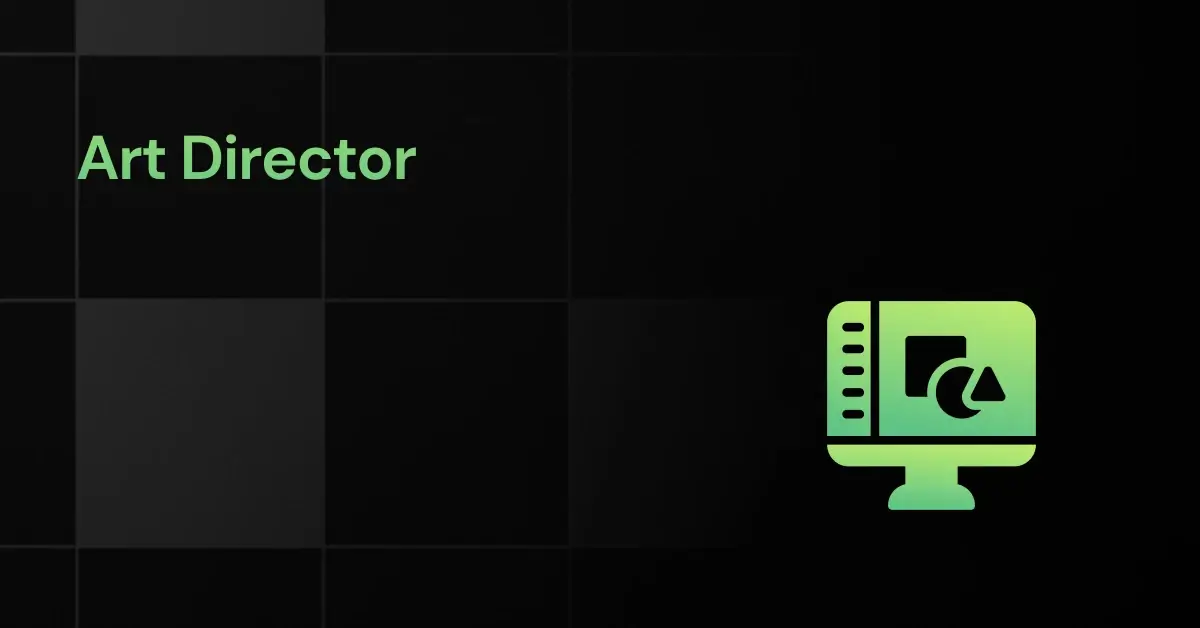


Art Directors are responsible for the visual style and images in magazines, newspapers, product packaging, and movie and television productions.
They create the overall design and direct others who develop artwork or layouts.
This role is a natural progression for Graphic Designers, as it requires a deep understanding of visual aesthetics and the ability to guide and inspire creative teams.
Job Market and Demand in India:
- The demand for Art Directors in India is steadily growing, particularly in the fields of advertising, media, and film production.
- With the expansion of digital media, there is an increasing need for Art Directors who can oversee the visual aspects of online content.
- Major cities like Mumbai, Delhi, and Bengaluru offer the most opportunities due to their status as media and advertising hubs.
Skills and Knowledge Prerequisites:
- Strong visual design skills with an eye for color, typography, and layout.
- Proficiency in design software like Adobe Creative Suite.
- Experience in leading and directing design projects.
- Knowledge of the latest design trends and technologies.
- Ability to conceptualize and execute visual ideas effectively.
Transferable Skills:
- Excellent communication and leadership skills.
- Creative thinking and problem-solving abilities.
- Strong project management and organizational skills.
- Ability to work under pressure and meet tight deadlines.
- Team collaboration and motivational skills.
Starting Salary:
- The average starting salary for an Art Director in India is approximately between INR 6,00,000 and INR 12,00,000 per annum.
Duration for Transition:
- Transitioning to an Art Director role can take 2-3 years, as it often requires extensive experience in design and leadership.
Risk Assessment:
- The primary risks include staying relevant in a rapidly evolving creative industry and adapting to new design technologies and trends.
Work Flexibility:
- Art Directors may have options for flexible working arrangements, including freelance projects, but often work full-time in studio or office settings.
Work-Life Balance:
- The role can be demanding with tight deadlines, but also offers creative satisfaction and leadership opportunities.
Career Progression:
- Potential to advance to higher creative roles like Creative Director or Head of Design.
- Opportunities to work in diverse industries, including advertising, film, television, and digital media.
Job Stability and Industry Outlook:
- The role of Art Director is expected to remain in demand, especially with the growth of digital and visual media.
- The evolving nature of advertising and media offers continual opportunities for innovative and adaptable Art Directors.
5. Brand Identity Designer
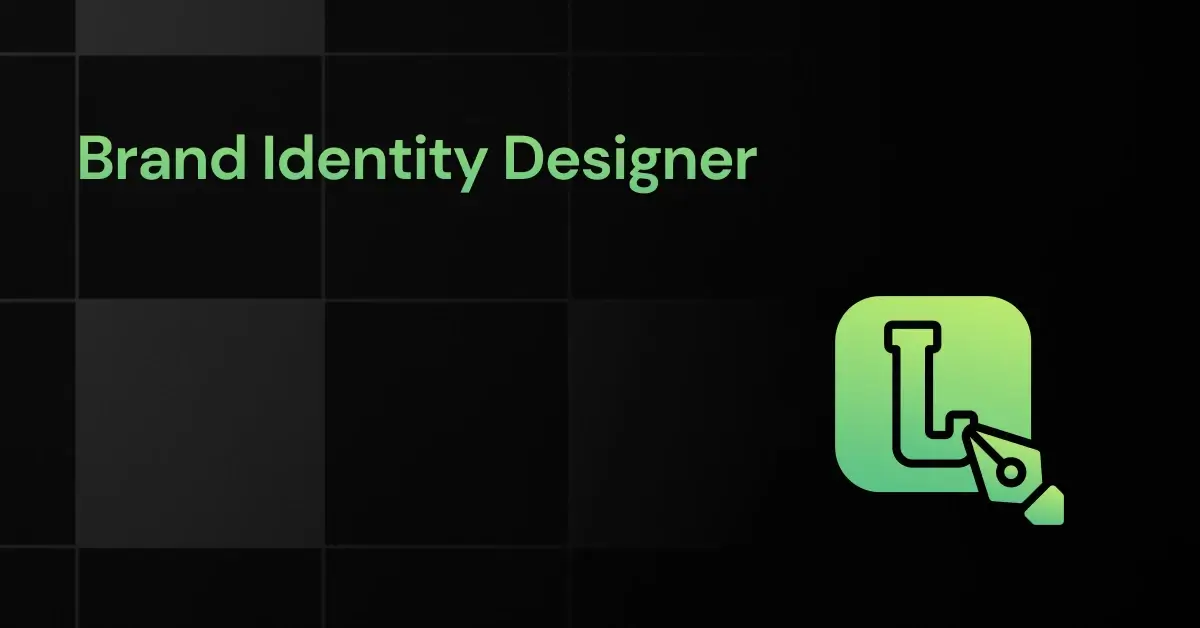


Brand Identity Designers specialize in creating and maintaining the visual identity of a brand. This involves designing logos, color schemes, typography, and other visual elements that represent a brand’s personality and values.
For Graphic Designers, this role is a perfect fit as it utilizes their skills in visual communication and creativity to build and enhance brand images.
Job Market and Demand in India:
- The demand for Brand Identity Designers in India is on the rise, driven by the growing importance of brand differentiation in a competitive market.
- Startups and established companies alike are increasingly recognizing the value of a strong brand identity, leading to more job opportunities in this field.
- Cities like Mumbai, Bengaluru, and Delhi, known for their vibrant startup ecosystems, offer numerous opportunities for Brand Identity Designers.
Skills and Knowledge Prerequisites:
- Proficiency in graphic design tools like Adobe Illustrator, Photoshop, and InDesign.
- Strong understanding of branding principles and marketing.
- Creative skills to develop unique and memorable brand identities.
- Knowledge of current design trends and consumer preferences.
- Ability to work with clients to understand and translate their vision into design.
Transferable Skills:
- Excellent communication and presentation skills.
- Creative thinking and problem-solving abilities.
- Attention to detail and a strong sense of aesthetics.
- Ability to work under pressure and meet tight deadlines.
- Flexibility to adapt designs based on client feedback and market trends.
Starting Salary:
- The average starting salary for a Brand Identity Designer in India is approximately between INR 4,00,000 and INR 8,00,000 per annum.
Duration for Transition:
- Transitioning to a Brand Identity Designer role can vary, typically requiring 6-12 months of experience in graphic design and branding.
Risk Assessment:
- The main risks include staying updated with design trends and coping with subjective client preferences and feedback.
Work Flexibility:
- Brand Identity Designers often have the option to work remotely, in-office, or as freelancers, with opportunities available in both full-time and part-time capacities.
Work-Life Balance:
- Typically, Brand Identity Designers have a balanced work-life, although project deadlines can sometimes require additional hours.
Career Progression:
- Opportunities to advance to senior design roles or specialize in areas like digital branding or marketing.
- Potential to lead design teams or start their own branding consultancy.
Job Stability and Industry Outlook:
- The field of brand identity design is expected to grow, with an increasing number of businesses focusing on building strong brands.
- The evolving digital landscape offers new opportunities for innovation in brand identity design.
6. Creative Director
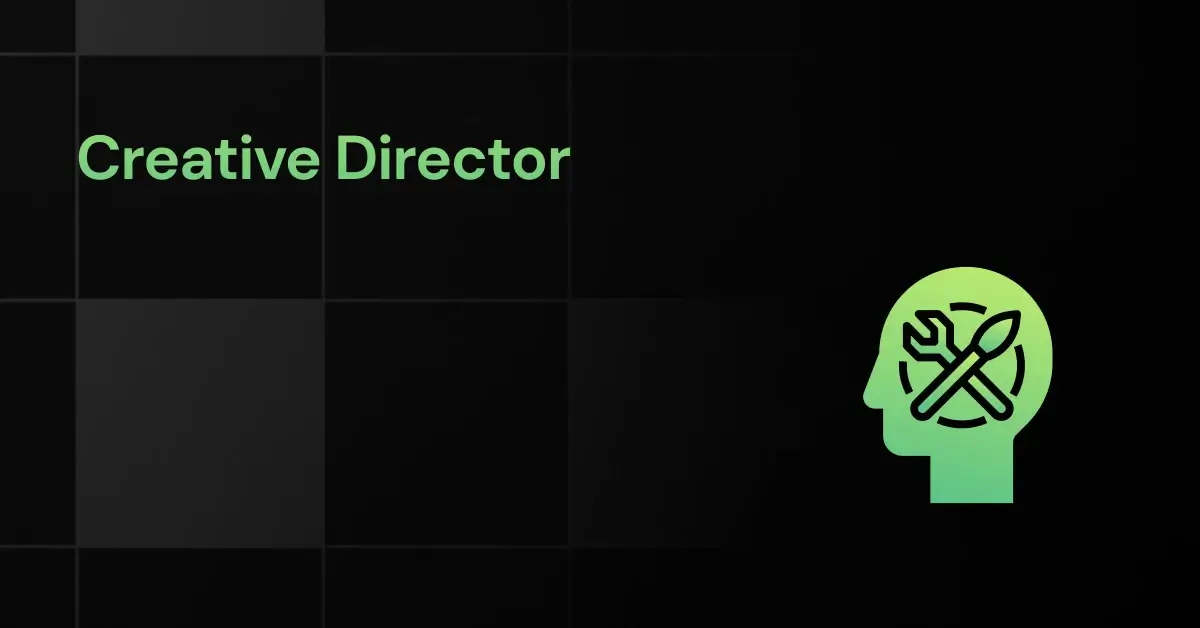


Creative Directors oversee the creative vision and execution across various media such as advertising, digital media, and film. They lead creative teams, conceptualize and implement visual and narrative strategies to enhance brand messaging.
This role is ideal for Graphic Designers who aspire to lead and influence creative projects on a larger scale, utilizing their design expertise and creative vision.
Job Market and Demand in India:
- There is a growing demand for Creative Directors in India, especially in advertising agencies, digital media companies, and corporate marketing departments.
- The rise of digital and social media marketing has expanded the scope for Creative Directors to innovate in brand storytelling and visual communication.
- Major cities like Mumbai, Bengaluru, and Delhi are key hubs for creative director opportunities, reflecting the concentration of media and advertising industries.
Skills and Knowledge Prerequisites:
- Extensive experience in graphic design, branding, and visual storytelling.
- Strong leadership skills to manage and inspire creative teams.
- Proficiency in design software and understanding of digital media trends.
- Excellent communication and presentation skills.
- Strategic thinking and ability to conceptualize creative solutions for branding and marketing.
Transferable Skills:
- Creative vision and artistic direction.
- Team leadership and project management.
- Effective communication and negotiation skills.
- Adaptability to changing trends and technologies.
- Ability to work under pressure and meet tight deadlines.
Starting Salary:
- The average starting salary for a Creative Director in India is approximately between INR 8,00,000 and INR 15,00,000 per annum.
Duration for Transition:
- Transitioning to a Creative Director role usually requires 3-5 years of experience in creative fields and a proven track record of successful project management and team leadership.
Risk Assessment:
- The primary risks involve adapting to rapidly changing market trends and maintaining creative excellence in a highly competitive environment.
Work Flexibility:
- Creative Directors often have the flexibility to work in various settings, including agencies, corporate offices, or as freelancers, with options for full-time, part-time, and remote work.
Work-Life Balance:
- The role can be demanding with project deadlines but also offers creative fulfillment and leadership opportunities.
Career Progression:
- Opportunities to advance to higher executive roles in creative industries.
- Potential to start your own creative agency or consultancy.
Job Stability and Industry Outlook:
- The demand for Creative Directors is expected to remain strong, driven by the continuous need for innovative branding and marketing strategies.
- The evolving nature of media and advertising offers ongoing opportunities for creative leadership and innovation.
7. Multimedia Artist/Animator
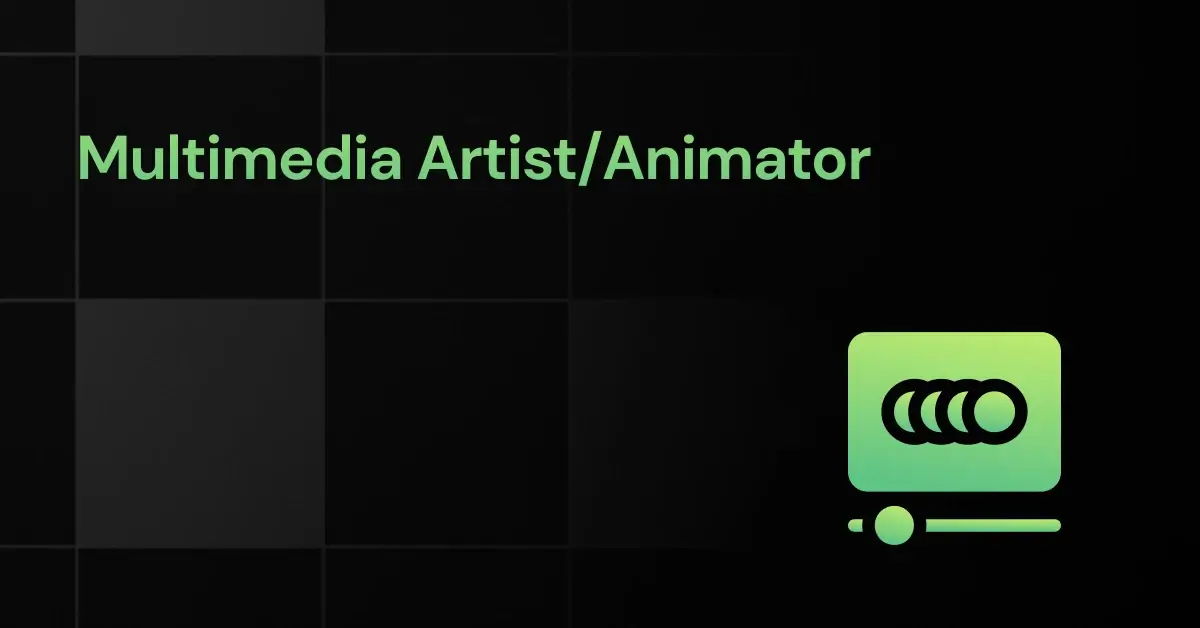


Multimedia Artists and Animators create visual effects and animations for various media such as movies, television, video games, and other forms of digital media.
This profession is an excellent fit for Graphic Designers due to the overlap in skills such as creativity, visual storytelling, and technical proficiency in design software.
Job Market and Demand in India:
- The demand for Multimedia Artists and Animators in India is growing, particularly in the entertainment and gaming industries.
- With the rise of digital media, there is an increasing need for skilled animators in film production, advertising, and virtual reality experiences.
- Cities like Mumbai, Hyderabad, and Bengaluru, known for their film and technology sectors, are key centers for animation opportunities.
Skills and Knowledge Prerequisites:
- Proficiency in animation software like Maya, 3ds Max, and Adobe After Effects.
- Strong artistic skills, including drawing, sketching, and understanding of color theory.
- Knowledge of 2D and 3D animation techniques.
- Ability to create storyboards and visualize scripts.
- Understanding of motion, weight, balance, texture, and form.
Transferable Skills:
- Creativity and imagination for visual storytelling.
- Attention to detail and patience for intricate animation work.
- Good communication skills for collaborating with teams and clients.
- Time management skills to meet project deadlines.
- Adaptability to new tools and technologies in the evolving field of animation.
Starting Salary:
- The average starting salary for a Multimedia Artist/Animator in India is approximately between INR 3,00,000 and INR 6,00,000 per annum.
Duration for Transition:
- Transitioning to a Multimedia Artist/Animator role can vary from 6-12 months, typically requiring dedicated training in animation and building a strong portfolio.
Risk Assessment:
- The main risks include keeping up with rapid technological advancements and fluctuating demand in the entertainment industry.
Work Flexibility:
- Multimedia Artists and Animators often have options for remote work, freelancing, and full-time positions, especially in studios and creative agencies.
Work-Life Balance:
- Work-life balance can vary, with periods of intense work during project deadlines, balanced by more flexible times.
Career Progression:
- Opportunities to advance to lead animator roles or specialize in areas like character animation or visual effects.
- Potential to transition into roles like Animation Director or Creative Director with experience.
Job Stability and Industry Outlook:
- The animation industry in India is expected to grow, driven by the increasing demand for high-quality visual content in media and advertising.
- The rise of digital platforms and online content creation offers new opportunities for animators.
8. Web Designer
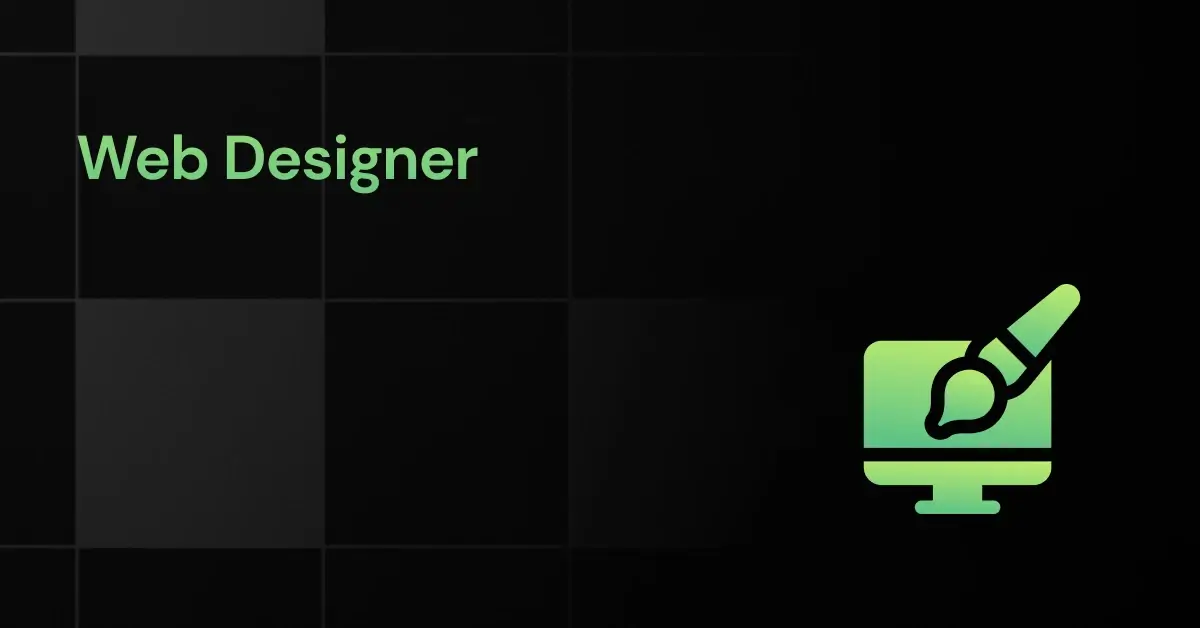


Web Designers are responsible for creating the layout, visual appearance, and usability of websites. They blend technical skills with artistic design to produce websites that are both functional and aesthetically pleasing.
For Graphic Designers, transitioning to web design is a natural progression, as it allows them to apply their visual design skills in the digital realm, expanding their creative and technical horizons.
Job Market and Demand in India:
- The demand for Web Designers in India is consistently high due to the ongoing need for businesses to establish and maintain an online presence.
- With the increasing focus on e-commerce and digital marketing, skilled Web Designers are sought after in various industries.
- Major IT hubs like Bengaluru, Hyderabad, and Pune offer numerous opportunities for Web Designers, reflecting the concentration of tech companies and startups.
Skills and Knowledge Prerequisites:
- Proficiency in web design tools like Adobe Photoshop, Illustrator, and Dreamweaver.
- Understanding of HTML, CSS, and basic web programming languages.
- Knowledge of responsive design and cross-browser compatibility.
- Skills in user interface (UI) and user experience (UX) design.
- Creativity and attention to detail in visual design.
Transferable Skills:
- Strong visual design skills and creativity.
- Technical aptitude and willingness to learn new web technologies.
- Problem-solving skills and the ability to think critically.
- Good communication skills for client interactions and team collaboration.
- Time management skills to meet project deadlines.
Starting Salary:
- The average starting salary for a Web Designer in India is approximately between INR 3,50,000 and INR 7,00,000 per annum.
Duration for Transition:
- Transitioning to a Web Designer role can take 6-12 months, depending on the individual’s prior experience and learning pace.
Risk Assessment:
- The main risks include staying updated with the latest web design trends and technologies in a rapidly evolving field.
Work Flexibility:
- Web Designers often have flexible work options, including remote work, freelancing, and full-time positions in various industries.
Work-Life Balance:
- Generally, Web Designers enjoy a balanced work-life, with some periods of intense work during project deadlines.
Career Progression:
- Opportunities to advance to senior web designer or web developer roles.
- Potential to specialize in areas like UI/UX design or front-end development.
Job Stability and Industry Outlook:
- The web design industry in India is expected to grow steadily, driven by the increasing importance of online presence for businesses.
- The continuous evolution of web technologies and design trends offers ongoing opportunities for career growth and skill development.
9. Interaction Designer
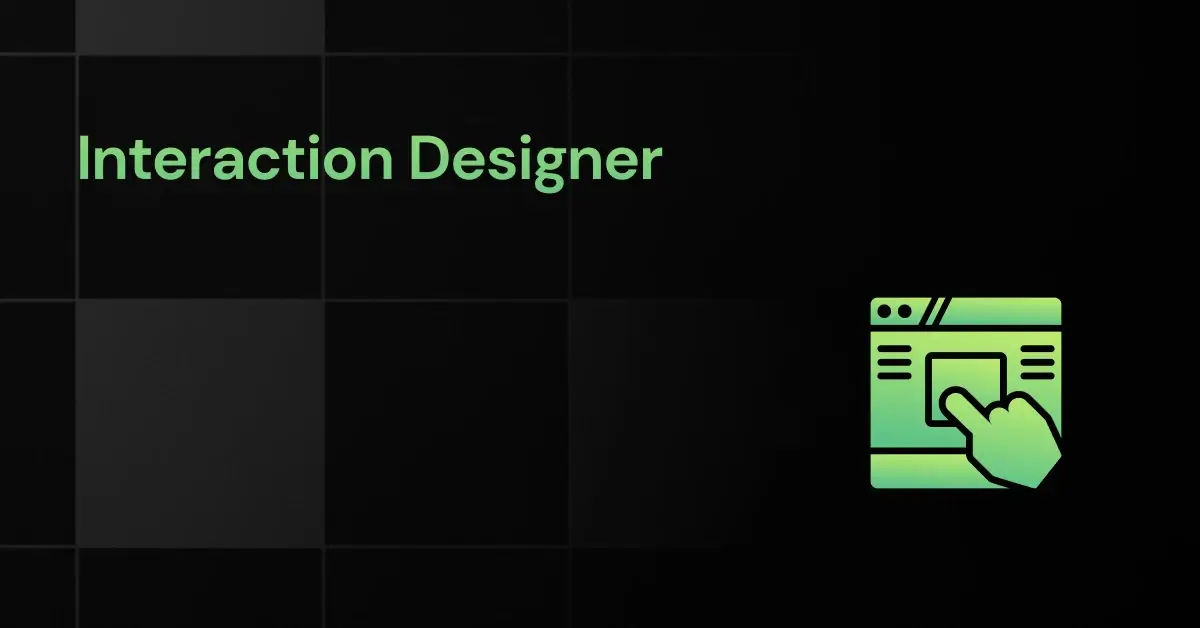


Interaction Designers specialize in creating engaging interfaces and experiences for digital products like websites, apps, and software. They focus on
how users interact with technology, ensuring a seamless and intuitive user experience.
For Graphic Designers, this role is a natural extension of their skills, allowing them to apply their understanding of aesthetics and user-centric design in the digital interaction space.
Job Market and Demand in India:
- The demand for Interaction Designers in India is growing, driven by the digital transformation of businesses and the increasing importance of user experience (UX) in product development.
- With the rise of mobile and web applications, there is a significant need for designers who can create user-friendly and visually appealing interfaces.
- Tech hubs such as Bengaluru, Hyderabad, and Pune are leading centers for opportunities in interaction design, reflecting the concentration of IT and software companies.
Skills and Knowledge Prerequisites:
- Proficiency in design and prototyping tools like Sketch, Adobe XD, and Figma.
- Understanding of user experience (UX) principles and user-centered design methodologies.
- Knowledge of interaction design trends and best practices.
- Skills in creating wireframes, user flows, and interactive prototypes.
- Familiarity with basic front-end development (HTML, CSS, JavaScript) is beneficial.
Transferable Skills:
- Strong visual design skills and attention to detail.
- Creative problem-solving and critical thinking abilities.
- Effective communication and collaboration skills.
- Adaptability to new technologies and design trends.
- Empathy and the ability to understand user needs and behaviors.
Starting Salary:
- The average starting salary for an Interaction Designer in India is approximately between INR 4,00,000 and INR 8,00,000 per annum.
Duration for Transition:
- Transitioning to an Interaction Designer role can take 1-2 years, depending on the individual’s background and the depth of training in UX/UI design.
Risk Assessment:
- The main risks include staying current with rapidly evolving design technologies and user experience trends.
Work Flexibility:
- Interaction Designers often have the option to work remotely, as well as opportunities for full-time, part-time, and freelance roles.
Work-Life Balance:
- Generally, Interaction Designers can maintain a good work-life balance, though project deadlines may occasionally require extended work hours.
Career Progression:
- Potential to advance to senior or lead UX/UI designer roles.
- Opportunities to specialize in areas like mobile app design, voice user interface (VUI), or virtual reality (VR) design.
Job Stability and Industry Outlook:
- The field of interaction design is expected to grow, with a steady demand for skilled designers in the tech and digital product sectors.
- The ongoing digitalization of services and the focus on user experience in product development ensure a positive outlook for the profession.
10. Visual Designer
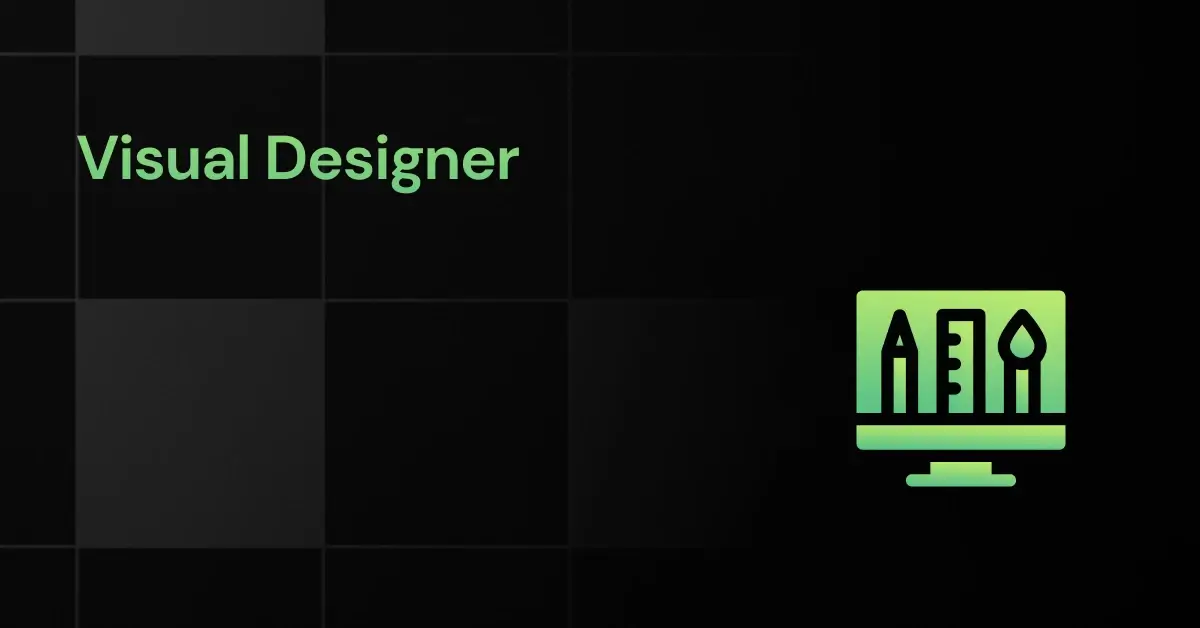


Visual Designers focus on the aesthetics of websites, applications, and other digital media, creating visually compelling and brand-aligned designs.
This role is particularly suitable for Graphic Designers as it leverages their strong foundation in visual principles, allowing them to apply their skills in a digital context to enhance user engagement and experience.
Job Market and Demand in India:
- The demand for Visual Designers in India is robust, driven by the growing digital economy and the need for visually appealing digital content.
- With the rise of digital marketing and online branding, companies across various sectors are seeking skilled Visual Designers.
- Major cities like Bengaluru, Mumbai, and Delhi offer a plethora of opportunities, reflecting the concentration of media, advertising, and tech companies.
Skills and Knowledge Prerequisites:
- Proficiency in graphic design tools such as Adobe Creative Suite (Photoshop, Illustrator, InDesign).
- Strong understanding of color theory, typography, and layout design.
- Knowledge of branding and visual identity development.
- Experience with digital media and responsive design.
- Ability to translate concepts and ideas into visually appealing designs.
Transferable Skills:
- Creativity and artistic vision.
- Attention to detail and a keen eye for aesthetics.
- Strong communication skills for articulating design concepts.
- Problem-solving skills and the ability to adapt designs based on feedback.
- Time management skills for handling multiple projects.
Starting Salary:
- The average starting salary for a Visual Designer in India is approximately between INR 4,00,000 and INR 7,00,000 per annum.
Duration for Transition:
- Transitioning to a Visual Designer role can take 6-12 months, depending on the individual’s existing skills and the intensity of learning new digital design tools.
Risk Assessment:
- The primary risks include staying abreast of the latest design trends and adapting to the rapidly evolving digital landscape.
Work Flexibility:
- Visual Designers often have the flexibility to work remotely, as well as opportunities for full-time, part-time, and freelance roles.
Work-Life Balance:
- Generally, Visual Designers can maintain a good work-life balance, though some projects may require extra hours to meet deadlines.
Career Progression:
- Opportunities for advancement to senior designer roles or specialization in areas like UI/UX design.
- Potential to lead design teams or transition into creative director roles.
Job Stability and Industry Outlook:
- The visual design field is expected to remain stable and grow, fueled by the continuous demand for high-quality digital content.
- The evolving nature of digital media offers ongoing opportunities for career development and skill enhancement.
Frequently Asked Questions
1. I want to change my career from graphic designer. What career change options are available for me?
If you want to change your career from graphic design, some of the career options include:
- Transition into UI/UX Design, leveraging your skills in visual design and user-centric thinking.
- Explore roles in Digital Marketing, where your design expertise can enhance online branding and advertising.
- Consider a career in Art Direction, overseeing visual aspects of advertising and media production.
2. How can Graphic Designers identify which new career path is right for them?
Think about what you like doing in Graphic Design, what you’re good at, and what kind of new job needs those skills. Look at different jobs and see which ones fit you best.
3. Which transferable skills from Graphic Designing are most valuable in other industries?
The transferable skills from Graphic Designing are:
- Strong visual communication skills, essential for conveying ideas and messages effectively.
- Creativity and innovation, crucial for developing unique and engaging designs.
- Proficiency in design software (like Adobe Creative Suite), valuable in various digital creation roles.
4. How long does it typically take for a Graphic Designer to transition to a new career?
The transition period can vary, usually ranging from a few months to a year, depending on the new career path and any additional training or qualifications required.
5. What are the risks associated with Graphic Designers making a career change?
Risks include the challenge of adapting to a new industry, the potential need for additional training or education, and the uncertainty of job satisfaction in the new career path.
6. How stable are the new career options for Graphic Designers?
The stability of new career options for Graphic Designers depends on the chosen industry and role. Fields like UI/UX design, digital marketing, and branding typically offer steady opportunities with potential for growth.
7. Where can Graphic Designers find professional advice for a career change?
Graphic Designers seeking a career change can find professional advice through Placement Preparation. They offer guidance on career options, skill development, and navigating the job market effectively.
Final Words
With the right approach, graphic designers can successfully navigate their way to a career that not only utilizes their artistic strengths but also aligns with their personal and professional goals.
We’ll keep this article updated as new career paths open up for Graphic Designers. Think of it as a growing guide that changes with the times, always giving you the latest info on where your Graphic Designing skills can take you next. Keep an eye on this space for more updates!
Explore More Alternative Careers for:
Related Posts


How to Answer: Why IT After Chemical Engineering?
Switching from chemical engineering to IT might feel like a big change—after years of working with reactions, processes, and materials, …

